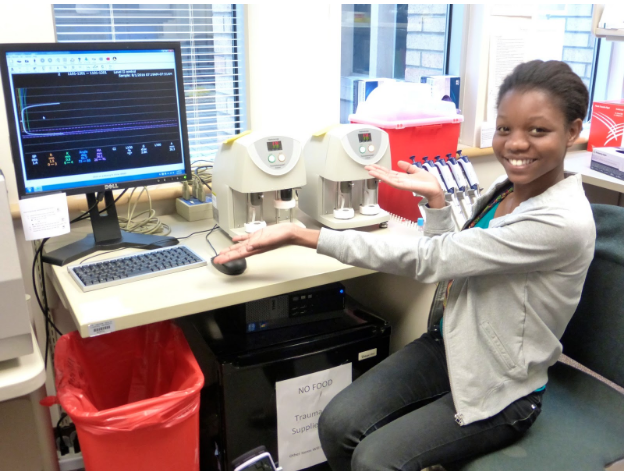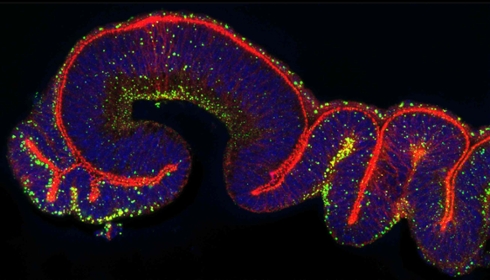Tags
"ohsu"
McGill Lawrence: Trauma Research at the Oregon University of Health and Sciences

To me they look like tiny robots from a futuristic film made in the seventies. But these are the TEG machines, diagnostic instruments that help analyse bleeding and thrombotic risks through a whole blood assessment. It measures for example, how long blood takes to clot, how strong the clot is and how long the clot stays for. TEG machines are invaluable in the ICU because it helps the doctors and caregivers know whether a person is prone to too much blood clotting or thinning and will give them the necessary medication to counteract the condition.
For two months now, I have been participating in the Trauma Research Associates Program (T-RAP). The program is part of the Trauma Research Institute at the Oregon Health and Sciences University, OHSU, and is a yearlong commitment. I first heard about the program from my Chemistry professor Arthur Glasfeld, who mentioned that other students he had recommended for the program had found it a very good preparatory program for careers in the healthcare field. I am interested in public health, nursing, and environmental health and I hoped by participating, I would gain obtain valuable insights about these three fields and hopefully narrow down to one field that I can follow in Graduate school.
The research I am involved in focuses on traumas, people get seriously injured in car accidents, falls, or by gunshots etc. and are brought to the Emergency Department and ICU. These patients are at an increased risk of developing infections, blood clots, post traumatic stress disorders (PTSD) among others, these on top of very severe injuries or diseases that brought them into the hospital. We obtain information about their stay, and that will allow the team to determine factors that place people at higher risk for developing complications. For example in the PTSD study, we are investigating proteins involved in triggering the development of PTSD after an injury rendering some people more at risk than others.
There are people of diverse background in the team, ranging from chemistry to former art majors to salespeople. Thus besides the research opportunity, I was very excited to start because I knew that not only is the team involved in groundbreaking clinical research, they also have nurtured many individuals like me who have gone on to become medical students, nurses and other health professionals. I felt that I was going to be in a good environment to be tutored, and could not wait to be exposed to both the hospital floor and the research front. My expectations were far more exceeded by what I actually experienced at OHSU.
Notes from Wehrli Lab, OHSU

Fluorescence image of Drosophila wing disc in cross-section. Cell nuclei in blue, membranes in red, and a protein complex unique to Wnt signaling in green.
After several weeks in a fruit fly lab, I now feel quite confident in my ability to dissect larvae, create new crosses from different fly strains, and prepare tissues for microscopic imaging. Although I had never performed these techniques just two months ago, I now carry them out from memory on a regular basis. Without realizing it, I have learned how to identify many of the common Drosophila mutants that are used to create experimental crosses. I am also learning how to combine various protein or RNAi constructs in a single Drosophila line in order to interrupt or better visualize components of the Wnt signaling pathway. However, the most amazing thing to me is how much my dissection skills have improved. On my first day, I was shocked that I would be expected to remove organs from a larva only two or three millimeters long. Now, I can perform the task readily, although not nearly as quickly as my more experienced co-worker, Misha. I still have a lot to learn about the mechanisms involved in Wnt signaling. Understanding the research is far more difficult than simply carrying out the procedures. While I now know quite a bit about working with fruit flies, the complexities of the signaling pathway still elude.
Continue reading Notes from Wehrli Lab, OHSU
Wehrli Lab Notes, Daniel Lybrand '13
I am currently working at OHSU in the lab of Marcel Wehrli, Ph.D. The lab studies development in Drosophila (fruit flies) and focuses on the Wnt signaling pathway, one that features prominently in developmental biology research. My first week at OHSU has introduced me to a completely new area of biology. Most of my prior research experience has been in plant physiology. I have never worked with Drosophila before and know almost nothing about their development, so I am guaranteed to learn something new every day.
As a novice in the field, I learn from both Marcel and his research assistant, Misha (also a Reedie). I don’t yet have a project of my own, so I usually assist Misha with her experiments. Some of what I learn is completely new – techniques that I have never seen before.
In the past week, I have learned how to distinguish between male and female flies, how to tell a virgin from a fly that has never mated, how to dissect a fly larva, and how to identify the imaginal discs within the larva that eventually develop into various appendages. Other things are familiar but must be re-learned, as different labs carry out basic protocols in different ways. Antibody staining fruit fly larvae is very different from staining plant tissues!
Continue reading Wehrli Lab Notes, Daniel Lybrand '13
